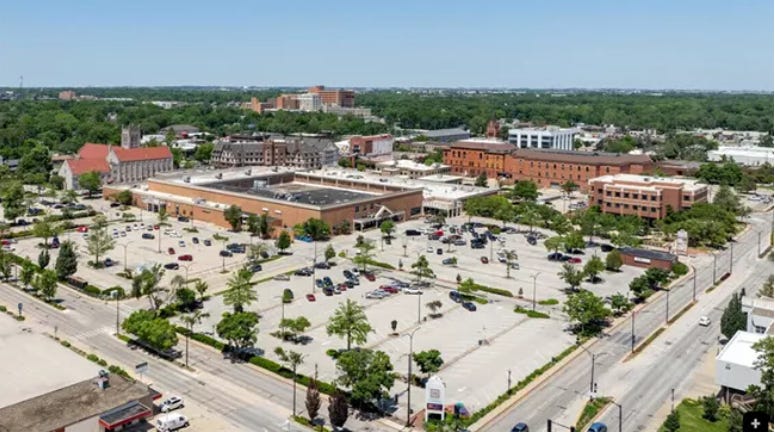“Move Fast and Break Things” is a dangerous mindset.
It may work relatively well in the context of mobile applications, but it breaks down pretty quickly when we come down to planet Earth.
It’s not the type of thing you’d want to hear when it comes to emergency management, hospital administration, or national defense. Caution and thoughtfulness can be useful.
Our cities probably require something of a balance, however.
Whereas cities used to grow naturally (and typically vertically), we instead find growth – and change – to be heavily restricted today.

Our zoning codes heavily restrict land use by geography and, unfortunately, are major pieces in the puzzle of racial segregation across the United States. As the United States rapidly suburbanized post-WW21, city officials backed by federal priorities fundamentally altered the very idea and purpose of a “city”. Planners decided to tear down block by block in misguided urban renewal efforts regarded as “slum clearance”, contributing to the demolition of and exclusion in the urban core.2
This new order, if you will, has written off the opportunity for natural growth without suburban sprawl. Instead, efforts to preserve “neighborhood character” through excessive historical preservation, architectural reviews, and density restrictions have contributed to housing supply shortages and racial segregation.

The parking lot pictured above is an impressive example. It is protected as a contributing element to the Urbana-Lincoln Hotel/Lincoln Square Mall. This is despite the greenhouse effect of the asphalt, lack of usefulness of this much parking, and the way it inhibits any commercial or residential uses on an entire city block.
These efforts, similar to others in Los Angeles or in St. Louis, have also made doing simple things incredibly difficult. Instead, we aggressively seek to control and limit change. We go so far as to protect incredibly unproductive uses. Nothing can be accomplished without excessive community meetings, without variances from city staff, on-time, or under-budget.
Bike lanes in St. Louis may take nearly a decade or longer to get built, like the Tower Grove Connector Project which is finally underway.
Apartment buildings get caught – or canceled – in opaque and unprofessional community meetings. This project was cancelled after NIMBY opposition preserved a fenced off parking lot that no one can even use.
Public toilets in San Francisco end up costing more than an average home.
These are all useful projects. None of them should take this long, let alone cost this much, or be subject to cancellation from neighbors in quasi-public meetings.
And at the other side of this tangled web of red tape is not a better city, but rather one that simply does not change or meet the current and future needs of its residents.
To be clear, this is not a cry for a loose regulatory environment.
Instead, it’s a call for making things both better and safer by making change possible.
If that sounds vague (as it should), then consider what this might look like:
Plan a meticulous buildout of a protected bike lane – even if it takes a decade – but do a quick build out now to keep riders from dying in the interim. Make things better, for a much smaller cost, in the meantime.
Remove – or limit – subjective reviews in the housing pipeline. This includes both design and historical elements. Design standards will ultimately stifle architectural creativity and housing supply, and what looks pretty to one person will be completely different to another. These constraints raise costs and imperil property rights.
Embrace best practices from other cities without having to recreate the wheel. Kansas City and South Bend are experimenting with pre-approved housing plans to speed up the development process and make housing cheaper to build and buy. We need to do that everywhere, as I advocated for here, but waiting years to make minor corrections has major costs in the present.
Reduce limitations on density and allow for mixed uses. One of the things that makes downtowns great is the fact that you might have apartments, office, commercial, and other uses all together. You can build a more efficient city with multiple heights, densities, and land uses. As I wrote earlier this week, these benefits should not be exclusive to downtown. The rest of the city should have liberalized zoning to make everyone’s neighborhood better too.
These changes would allow cities to respond to crises more quickly and meet the current needs of residents. Waiting years to provide basic amenities or decades to resolve affordability issues is both irresponsible and ineffective.
To make cities work for more people, to build political power in urban areas, and to make people believe in government, we have to be more responsive. Embracing uncertainty and forgoing complete control in our cities should be a key priority for both the YIMBY and urbanist communities.
Let’s make cities interesting, fun, and nimble!
Nicolaides, B., & Wiese, A. (2017). Suburbanization in the United States after 1945. Oxford Research Encyclopedia of American History. https://doi.org/10.1093/acrefore/9780199329175.013.64
Tighe, J. R., & Ganning, J. P. (2015). The divergent city: Unequal and uneven development in St. Louis. Urban Geography, 36(5), 654–673. https://doi.org/10.1080/02723638.2015.1014673




